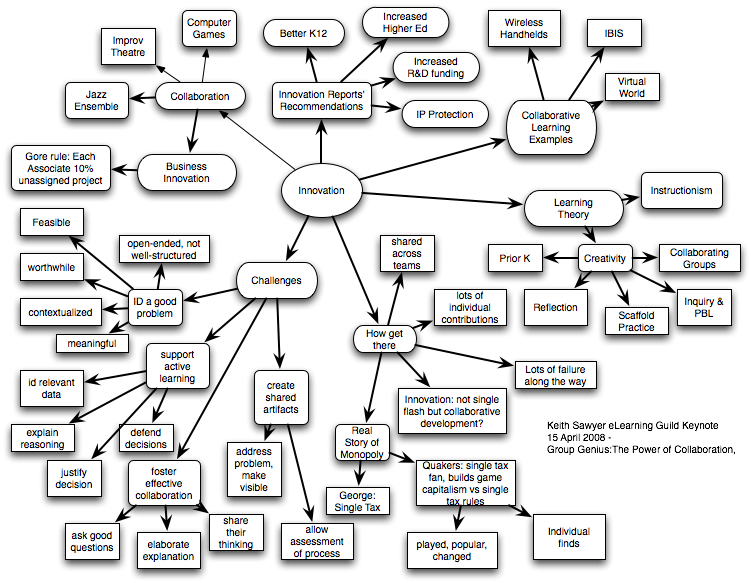Stefan Sagmeister’s a renowned designer, and gave us a talk about what he’s learned and how it’s influenced his design. Or rather, more how what he’s learned has driven a number of design projects. He started with the type of stuff his studio does: music business design (a music building flexible logo approach), socially responsible design (helping TrueMajority.org demonstrate Pentagon spending in context, with creative approaches including the pig car train and the topsy-turvy bus), and corporate design (an embossed organic hierarchy, e.g. flowers, as a vehicle for different lighting treatments to illustrate a lighting company corporate report).
The second part of his talk started with talking about how creative organizations use reflection to maintain innovation. This was an interesting contrast to a discussion in the first day of the Learning Management Colloquium where Lance was arguing with a audience member about whether reflection was necessary (!?!). Obviously, I’m all for it; in times of increasing change, execution of established patterns won’t help, and you’ll need to innovate, and reflection is a component of that.
From his reflections, he had a list of statements or mantras that he then had used as the basis for a number of commissioned works with a wide variety of representations, from words created out of a variety of materials to huge manifestations of the prose. There was quite a variety, some of them seeming to overlap a bit in the content of the phrases, and sometimes in the approach taken. Some were very clever plays, however, on the concepts. A billboard that faded illustrated letting go of issues, and a visual web that you got ‘tangled in’ as you passed by reflected the problems of lying.
Not specifically about learning, the issues of creativity and reflection were valuable and inspirational. My last mind map, at least for this conference:




